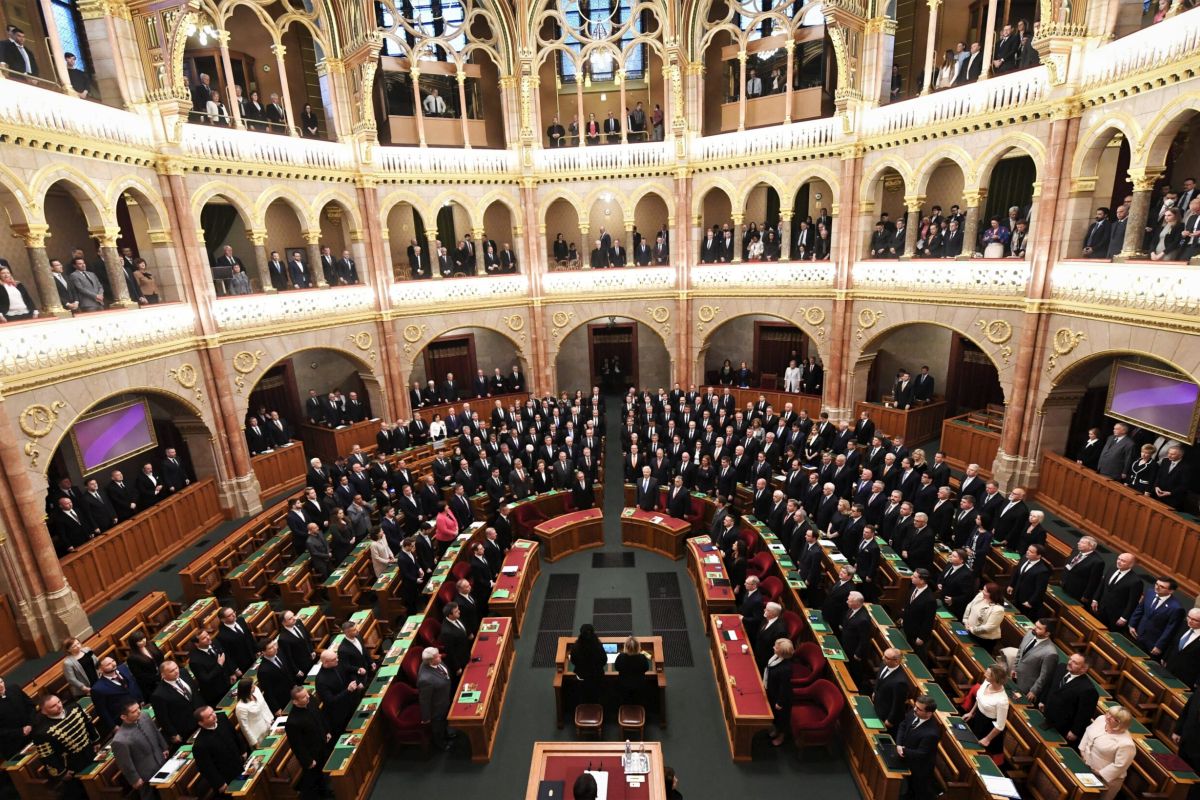“We hereby ordain that every year on St. Stephen’s Day […] we shall hold a sitting at Székesfejérvár. And if we are unable to attend, the Bishop Palatine shall be there without fail in our stead, and shall listen to the cases on our behalf. And all the nobles who wish to be in attendance are free to assemble there.”

The above lines are from the Golden Bull of 1222, proclaimed by King Andrew II, and they contain written evidence of an early form of Hungarian parliamentarism. As is so often the case in history, the law merely codified an existing social structure in written form, meaning that parliaments were being held in Hungary long before the document in question was written in the thirteenth century.
The Parliament or Diet has always been our most important constitutional institution, and as such, embodied and represented the nation as a whole, exercising sovereignty in conjunction with the king. The fact that the idea of parliament is so organically fused with the idea of national sovereignty is the most defining feature in the traditions of Hungarian public law. This view was also expressed by a man commonly known as the ‘greatest Hungarian’, István Széchenyi, when he spoke in Hungarian at the Parliament in Pozsony, (now Bratislava, Slovakia) during the early-nineteenth-century Reform Era. After all, the parliament is where we discuss our own national affairs and decide our fate, and we must do so in our own national language, Hungarian.
All of this is also reflected in the motifs and symbols of the Parliament building: it is no accident that there are so many Hungarian patterns and decorative elements, nor is it mere happenstance that its architectural style is so unique, differing profoundly from the Viennese classicist style. It expresses what it was built for: a self-sufficient, independent, and Hungarian nation. Thus, as both a building and an institution, Parliament is not merely the seat of a decision-making body, but also the embodiment of an idea. It expresses an idea whose main motifs can also be seen in the features of today’s Hungary: the Hungarian spirit can recognize itself in it.
And if one were to believe that this is mere history, nothing could be further from the truth! Hungary’s current constitution refers by name to the historical constitutional achievements and the thousand years of parliamentary activity. The Bishops Palatine are no more, and Székesfehérvár is no longer the parliamentary capital, but the Hungarian Parliament has been functioning ever since.